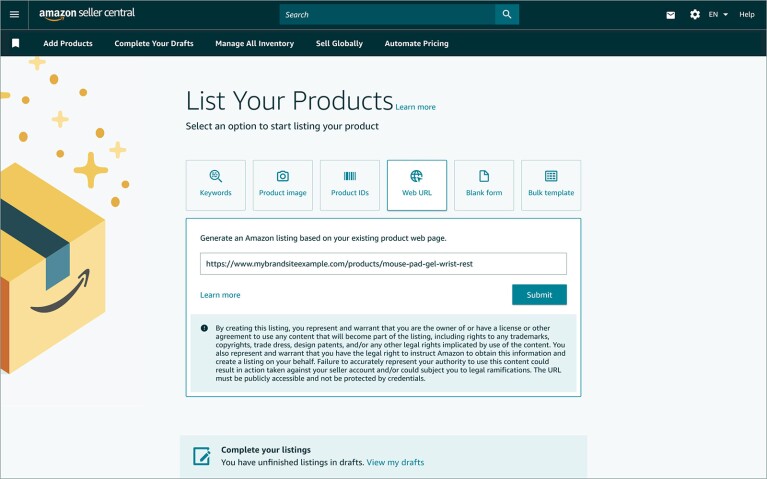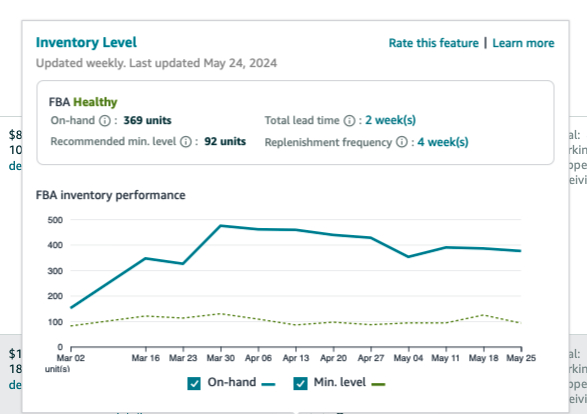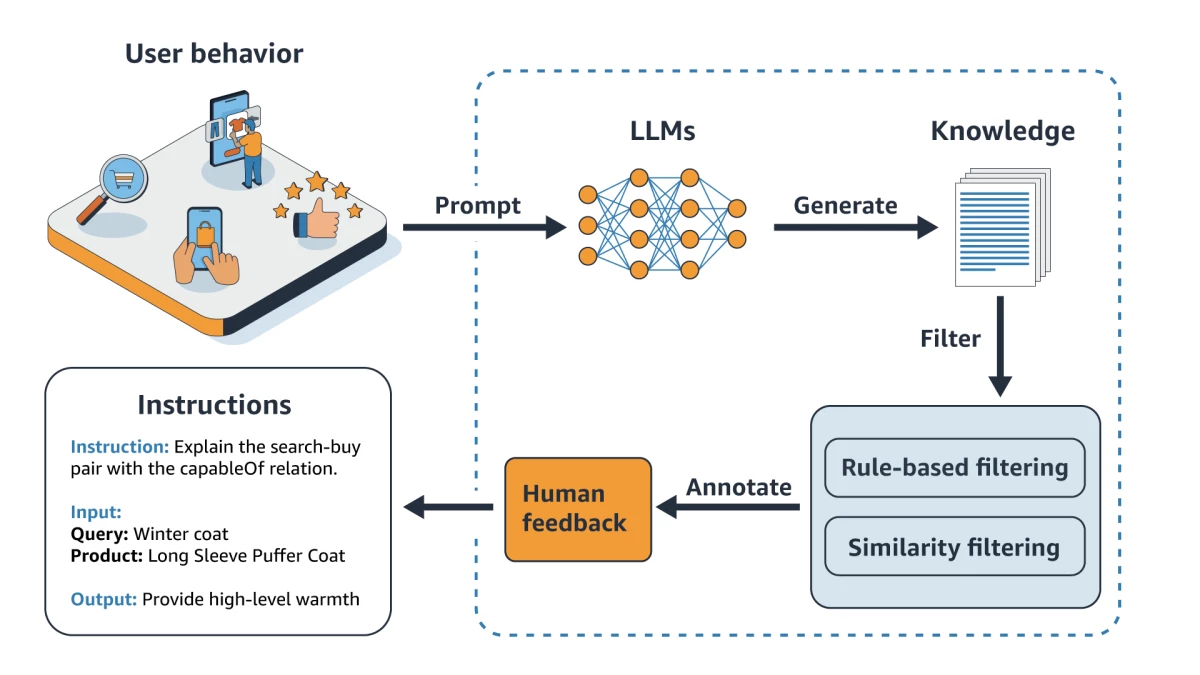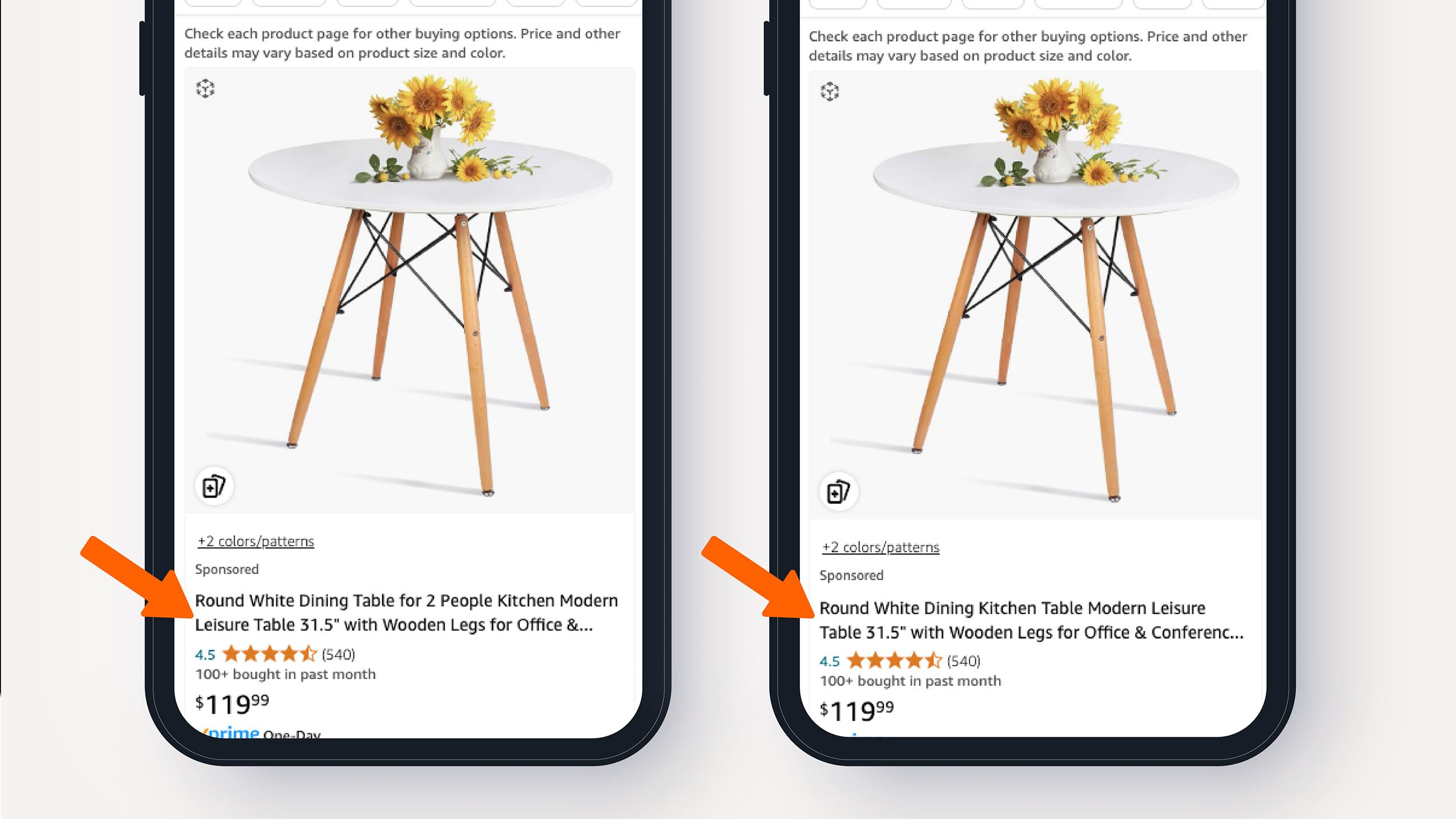Amazon AI Tools: Complete Guide for Sellers (2025)
Amazon’s AI tools are revolutionizing e-commerce by transforming how sellers optimize listings, manage inventory, and engage customers. From Project Amelia’s personalized business insights to Rufus’s conversational shopping experience, these AI-powered features offer unprecedented opportunities for growth.
In this comprehensive guide, we’ll explore essential Amazon AI tools for sellers and vendors, including automated listing generation, A+ content creation, and advanced inventory management systems. You’ll discover how to leverage these technologies to boost visibility, increase conversions, and stay competitive in Amazon’s evolving marketplace.
Vendor/Seller-facing AI Tools
This section explores Amazon’s AI tools for sellers and vendors, highlighting how these features aim to enhance efficiency and sales on the platform. It covers a range of AI-driven functionalities designed to improve content creation, inventory management, and overall operational effectiveness, providing a comprehensive overview of how these technologies can potentially benefit sellers and vendors.
Project Amelia: AI-Driven Selling Assistant

Amazon recently introduced Project Amelia, a generative AI-based assistant aimed at providing sellers with personalized business insights and recommendations. Currently in beta for a limited group of U.S.-based sellers, Project Amelia is designed to streamline various aspects of managing an Amazon store by offering real-time data, strategic advice, and business metrics.
Project Amelia’s key features include:
1. Personalized Recommendations and Insights: The AI assistant provides sellers with tailored information about their specific business operations, offering guidance on how to optimize revenue, manage inventory, and address operational issues. Sellers can ask questions like, “How is my business performing?” and receive immediate access to sales data, website traffic, and product-specific information. This capability is designed to enable faster decision-making based on concrete business metrics.
2. Knowledge-Based Support: Sellers can retrieve information and best practices by asking specific questions. For example, sellers may inquire about preparing for high-demand seasons, and Project Amelia will return relevant strategies based on reliable sources from Seller Central and beyond.
3. Issue Resolution and Action Recommendations: In the future, Project Amelia will expand its functionality to include problem diagnosis and task management, offering sellers options for resolving issues or, in some cases, even taking action on their behalf. For instance, if inventory discrepancies arise, the AI assistant can investigate the matter and provide support to resolve it.
Project Amelia is part of Amazon’s broader effort to leverage AI to reduce the time and effort required from sellers to manage their operations. The assistant is built using Amazon Bedrock, an AI infrastructure that scales generative AI capabilities. As the assistant evolves, it is expected to deliver more sophisticated, personalized advice, and will gradually become available to sellers in other regions and languages.
Impact on Sellers: Project Amelia represents a shift in how sellers manage their businesses on Amazon. By automating tasks and providing timely insights, it has the potential to simplify daily operations and strategic planning. The long-term effectiveness of the tool, particularly in its ability to anticipate seller needs and take independent actions, remains to be seen as it continues to develop and expand.
Generative AI for Product Listings

Amazon’s Generative AI for Product Listings is a suite of tools designed to simplify and enhance the process of creating product listings on the Amazon platform. These tools leverage advanced AI capabilities to generate product titles, descriptions, and other details from minimal input, such as a few descriptive words or an image of the product.
Sellers can provide a brief description of their product or even just a product image, and Amazon’s AI will generate a product listing.
Alternatively sellers can now provide a URL to their own website, which is automatically parsed by Amazon’s AI to create listings for Amazon’s store.
In September 2024, Amazon announced that sellers can now upload a spreadsheet containing basic product information, with the AI generating titles, descriptions, and bullet points for multiple products at once. This new capability allows sellers to create optimized listings in bulk, speeding up the process of getting products in front of customers.
According to Amazon, more than 100,000 sellers have already adopted these tools.
The long-term impact of this feature on seller operations and listing quality will become clearer as more feedback is gathered.
Other tools are going one step further: AMALYTIX offers a way to optimize product listings based on pre-selected keywords and a custom prompt which allows the users to fine-tune the listing generation process.
AI-Powered Listing Optimization with AMALYTIX
The AMALYTIX One-Click Optimization feature leverages advanced AI to transform your Amazon listings instantly. Using ChatGPT integration, it enhances titles, bullet points, and keywords based on pre-selected search terms and custom prompts. This AI-driven approach ensures your listings are both keyword-rich and conversion-optimized, giving you a competitive edge in Amazon’s marketplace.
Listing Fixes
Amazon has recently rolled out a new AI-driven program designed to fill in missing attributes in product listings on its platform. While this initiative aims to provide sellers with recommendations, it has sparked mixed reactions regarding its effectiveness and implementation.
The AI generates suggestions for changes to product listings, intended to create more comprehensive offerings. However, participation in this program is mandatory, meaning all sellers must actively review and manage the AI-generated recommendations without the option to opt out.

Feedback from sellers has highlighted some concerns, with many of the suggestions deemed incorrect or unnecessary for their well-established listings. This has led to additional responsibilities for sellers, who must regularly check and reject inappropriate recommendations to maintain the accuracy of their listings.
A+ Content and AI-Powered Branding

A+ Content on Amazon enables brands to enhance their product detail pages by incorporating additional elements such as image carousels, comparison charts, and brand-specific storytelling. This feature is intended to improve product presentation and communicate a brand’s value proposition more effectively. Historically, creating this kind of content has required significant time and resources, involving tasks such as photography, design, copywriting, and iterative revisions.
Recently, Amazon introduced generative AI tools to streamline the production of A+ Content. These tools assist sellers in generating product descriptions, lifestyle imagery, and brand narratives based on minimal input. For example, sellers can provide basic descriptive keywords or upload product images, and the AI will generate relevant content to complement product listings. This process aims to reduce the time and effort required to create detailed and visually rich content.
The AI-generated content tools are particularly useful for brands that may not have extensive design or content production capabilities, as they offer a more accessible way to develop content that enhances product visibility on the platform. This tool is currently available to brand owners in the U.S., with plans to expand to additional countries by the end of 2024.
AI Image Generation for Amazon Ads

AI Image Generation for Amazon Ads is a new generative AI solution designed to simplify the creative process for advertisers. Advertisers can start by selecting their product in the Amazon Ad Console and clicking “Generate”. The tool then creates a set of lifestyle and brand-themed images based on the product’s details.
The generated images can be refined by entering short text prompts or applying seasonal and lifestyle themes.
AI Video Generation for Amazon Ads
Amazon has introduced a new tool called Video Generator, designed to simplify the process of creating video advertisements for sellers using Amazon’s advertising platform. The tool, currently in beta for selected U.S. advertisers, utilizes generative AI to produce custom video ads in a matter of minutes. By using a single product image, the AI generates videos that highlight the product’s key features, aiming to make ad creation more accessible and less time-consuming.
This tool responds to a common challenge faced by businesses, where the time and cost associated with producing video content can serve as barriers. With the Video Generator, Amazon aims to address this issue by offering a solution that requires minimal input from sellers while leveraging Amazon’s internal retail insights to create visually engaging content. The videos are designed to help sellers communicate their product’s unique selling points more effectively and increase engagement with potential customers.
Inventory Management

Amazon has developed an AI-powered Inventory Management System that helps improve inventory health and automate forecasting. This system uses machine learning to create demand forecasts, which are then used to recommend optimal inventory purchases.
Consumer-facing AI Tools
This section explores Amazon’s consumer-facing AI ecosystem, highlighting how innovations like Amazon Rufus and Cosmo may transform product discovery on the platform.
Moreover, AI-generated summaries on the product pages, as well as the enhanced Alexa, may contribute to a changing consumer experience.
Amazon Rufus

Amazon Rufus, launched in beta in 2024, is a new chat-based conversational AI assistant integrated into Amazon’s shopping platform. It enables customers to engage in natural language conversations to discover products, get recommendations, and make purchasing decisions. Trained on Amazon’s product catalog, reviews, and web data, Rufus can understand and respond to a wide range of queries, from broad research questions to specific product comparisons.
Customers can ask questions about product features, read review summaries, and complete purchases within the chat interface. This shift represents a new way for consumers to discover and interact with products on Amazon, potentially increasing product discovery and informed purchasing decisions.
For Amazon sellers, Rufus necessitates adapting product listings and marketing strategies to the new conversational shopping experience. Learn more about optimizing for Amazon Rufus and discover data-driven insights from our Rufus study. Optimizing for natural language queries and providing detailed product information will be crucial for maintaining visibility and discoverability.
Amazon Cosmo
Amazon Cosmo is an AI-powered search algorithm developed by Amazon to enhance product discovery on its e-commerce platform. The system utilizes large language models (LLMs) to interpret customer queries and match them with relevant products more effectively than traditional keyword-based search methods.

The AI model behind Cosmo analyzes various data points, including customer behavior, purchase history, and product information, to create a comprehensive understanding of the relationships between products and customer needs. This allows the system to interpret the context and intent behind search queries, potentially leading to more accurate and personalized search results.
For Amazon sellers, Cosmo’s potential implementation may have several implications:
-
Product Visibility: The algorithm’s understanding of product features and customer preferences could affect where products appear in search results.
-
Listing Optimization: Sellers may need to adapt their product descriptions to align with Cosmo’s interpretation of relevant features.
-
Product Development: Insights from Cosmo’s prioritization of certain product attributes could influence future product design decisions.
It is important to note that the full impact of Cosmo on sellers is still unfolding, and its effectiveness compared to previous search algorithms remains to be seen. Understanding how product types and keywords work together helps for optimizing visibility in Cosmo’s AI-driven search results.
Personalized Product Recommendations and Descriptions

Amazon has expanded its use of generative AI to further personalize product recommendations and descriptions for customers. Building on the company’s existing AI and machine learning-based personalization tools, these new capabilities aim to make the shopping experience more relevant and efficient. By analyzing a customer’s shopping activity, preferences, and search behavior, Amazon generates tailored recommendations and product descriptions across the website and app.

For example, instead of generic recommendations such as “More like this,” the system now provides more specific suggestions, like “Gift boxes in time for Mother’s Day” or “Cool deals to improve your curling game,” depending on the customer’s previous interactions on the platform. Additionally, product descriptions are customized to reflect the customer’s search patterns. For instance, if a customer searches for a “table for two”, the AI can automatically adjust the product title to include “for 2 people,” whereas the same product might be shown with a different title to another customer, depending on the search query.
These AI-generated descriptions use large language models (LLMs) to highlight features that are most important to each shopper. The process includes a feedback loop, where an evaluator model checks the quality of the generated descriptions, ensuring that the product information is accurate and aligned with customer needs. This approach helps make product discovery more intuitive, particularly for users on mobile devices with limited screen space.
This feature, built using Amazon Bedrock, allows Amazon to scale and refine these AI-driven solutions, making it easier for customers to quickly find products that match their preferences, while also improving the visibility of relevant products for sellers.
Customer Reviews

Amazon has introduced a feature that leverages AI to generate concise summaries of customer reviews for its products. The platform employs large language models to analyze review content, sentiment, and trends, providing a comprehensive understanding of customer feedback.
This approach aims to provide shoppers with a snapshot of the key features and customer sentiment surrounding a product, without the need to sift through numerous individual reviews.
The Amazon AI customer review summaries are created by analyzing the text of verified customer reviews, identifying the most frequently mentioned product attributes and common themes. These summaries are then displayed prominently on the product detail page, allowing customers to quickly understand the pros and cons of a product before making a purchase decision.
For Amazon sellers, this feature presents both opportunities and challenges. On the one hand, accurate and well-generated AI summaries can potentially boost conversion rates by making it easier for customers to grasp the essential aspects of a product. Sellers with predominantly positive reviews may see their products highlighted in a way that resonates with shoppers, leading to increased sales.
However, the potential for inaccuracies or biases in the AI-generated summaries is a valid concern for sellers. If the AI system fails to capture the nuances of customer feedback or emphasizes a single negative aspect, it could unfairly harm a seller’s reputation and impact their sales. Sellers will need to closely monitor the accuracy of these summaries and work with Amazon to address any issues that may arise.
Clickable AI Product Attributes
Amazon has introduced a new feature called Clickable AI Product Attributes, which aims to provide customers with more detailed and informative product information directly on the product detail pages.
The system works by analyzing product titles, descriptions, and other available data to identify key attributes that customers are likely to find most relevant. These attributes are then presented as interactive buttons on the product page, allowing shoppers to quickly filter and compare similar items based on specific features. For example, a laptop listing might display clickable attributes for processor type, RAM, storage capacity, and screen size.
One of the primary benefits of this AI-driven feature is its ability to standardize attribute presentation across similar products, making it easier for customers to compare options. This standardization also helps sellers by ensuring that their products’ key features are prominently displayed, even if they haven’t explicitly highlighted them in their product descriptions. Additionally, the system can adapt to changing consumer preferences and search patterns, dynamically adjusting which attributes are displayed based on current trends and user behavior.
The goal of this feature is to help customers quickly understand the most important aspects of a product and make more informed purchasing decisions, without having to sift through lengthy product descriptions or customer reviews. It is currently only available in the Electronics category.
Amazon Alexa
Amazon is working on enhancing its Alexa Voice Assistant with generative AI to potentially improve its conversational abilities and capability to handle complex conversations. There are rumors that this upgraded version might require a monthly subscription fee, separate from Amazon Prime, to support its advanced AI capabilities. Using language models, the new Alexa aims to engage in more natural dialogues and provide personalized product recommendations based on each user’s preferences and browsing history.
The updated Alexa is designed to better understand natural conversational cues like pauses, hesitations, and emphasis, aiming to allow for more flowing and human-like dialogues. It can potentially modulate its tone and responses accordingly.
It is also intended to grasp a broader spectrum of commands and queries, without relying on precise terminology. It aims to better interpret the user’s intent behind their phrasing.
Additional inputs like camera, presence sensors, and context about the user’s home environment should be used to enhance its understanding of the user’s needs and intent.
With Alexa’s enhanced ability to understand natural language, it is crucial for sellers to tailor their product descriptions and titles to include conversational keywords. Instead of using technical jargon like “wireless earphones with noise cancellation,” sellers might opt for more conversational terms like “earbuds that block out noise” to match the way users speak when interacting with Alexa. By incorporating these natural language keywords, sellers can improve their product’s visibility and make it easier for customers to find what they’re looking for through voice search.
Future Outlook
As Amazon continues to integrate artificial intelligence into its e-commerce platform, several trends and predictions are emerging that could shape the future of online shopping. The following insights highlight potential developments in AI that may significantly impact both consumers and sellers on the platform.
Hyper-Personalized Shopping Experiences
The future of AI in Amazon e-commerce is likely to focus on hyper-personalization. As AI algorithms become more sophisticated, they will be able to analyze a broader range of consumer data, including real-time browsing behavior and social media interactions. This could lead to even more tailored product recommendations and marketing campaigns, allowing sellers to reach their target audiences more effectively.
Fraud Detection and Prevention
As e-commerce continues to grow, so do the risks associated with fraudulent activities. Amazon is likely to invest heavily in AI-powered fraud detection systems that can analyze patterns, identify anomalies, and prevent fraudulent transactions in real-time. These systems could also be used to detect and remove fake reviews or counterfeit products more effectively, enhancing the overall trustworthiness of the platform.
Ethical Considerations and Data Privacy
As Amazon expands its use of AI, ethical considerations surrounding data privacy will become increasingly important. Consumers are becoming more aware of how their data is used, and Amazon will need to balance the benefits of AI-driven personalization with the need to protect user privacy. Transparent data practices and robust security measures will be essential to maintain consumer trust.
Conclusion
In summary, Amazon’s integration of AI tools for both sellers and consumers marks a significant shift in e-commerce operations and user experience. For sellers and vendors, AI-driven features can enhance efficiency and sales through improved content creation and inventory management. For consumers, innovations like conversational AI assistants, AI-generated review summaries, and advanced search algorithms aim to transform the shopping experience by making it more personalized, intuitive, and informed.
As these technologies continue to evolve, they will likely play an increasingly critical role in shaping the future of online retail, driving both opportunities and challenges for all stakeholders involved.
FAQ
How does Amazon’s Project Amelia work?
Project Amelia is an AI-powered assistant for Amazon sellers. It provides personalized recommendations for revenue optimization, inventory management, and problem-solving. Built on Amazon Bedrock and leveraging generative AI, Amelia is currently available in beta for sellers in the U.S. Its goal is to support sellers with strategic decision-making and streamline day-to-day store management.
What role does AI play in Amazon advertising?
Amazon now offers AI-generated images and a Video Generator for Amazon Ads. With just a few clicks, sellers and vendors can create compelling lifestyle images or product videos tailored to their target markets.
What is Amazon Rufus?
Amazon Rufus is an AI-driven shopping assistant launched in the U.S. in 2024. Customers can ask questions, receive product recommendations, and make purchasing decisions directly through the assistant. For sellers and vendors, this means that well-optimized listings with clear information and conversational keywords are more important than ever to remain visible in Rufus’ recommendations.
How does Amazon use AI for customer reviews?
Amazon uses AI to summarize customer reviews. Instead of reading each review individually, shoppers see concise highlights of the most important product features. For sellers and vendors, this makes positive reviews even more critical, as they feed directly into the AI-generated summaries.
What costs are associated with Amazon’s AI tools?
Some AI features are built directly into Seller Central and are available at no extra charge. Other capabilities, such as advanced advertising tools or Project Amelia, are expected to be offered through special plans or beta programs. Sellers and vendors should stay informed, as Amazon often distinguishes between free core features and premium paid options.
Subscribe to Newsletter
Get the latest Amazon tips and updates delivered to your inbox.
Wir respektieren Ihre Privatsphäre. Jederzeit abbestellbar.
Related Articles
AI Image Models Tested: Which AI Delivers the Best Product Photos?
We tested Gemini 3 Pro, Flux, GPT Image 1.5, and others to find out which AI generates the best product images for Amazon. Read our comprehensive comparison.

Henriette Rasmussen
AI Agents in E-Commerce
What are AI agents and how do they work? We explain it in simple terms.

Christoph Vogt
Agentic Commerce Protocol (ACP): How AI Is Transforming Online Retail
With the Agentic Commerce Protocol (ACP), a new era in e-commerce begins: AI assistants like ChatGPT take over the shopping process. What does this mean for brands and online shops?

Trutz Fries